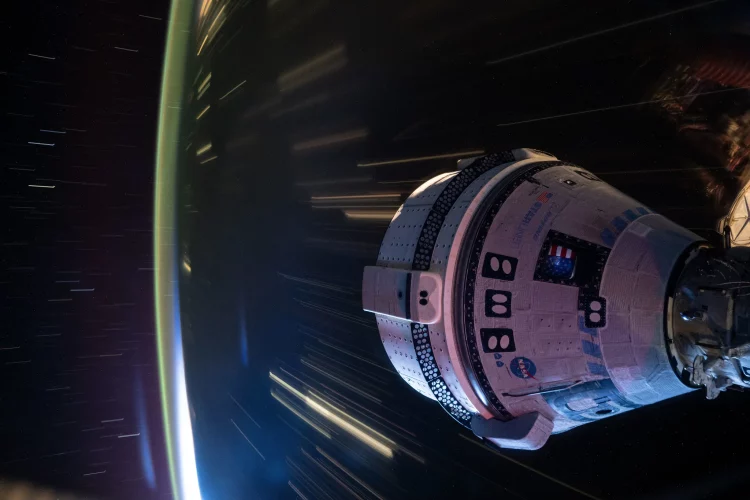Introduction
In the quest to explore space, crew flight tests are a crucial step in ensuring astronaut safety and mission success. As NASA continues to advance its deep space exploration programs, crew flight tests have become central to verifying the reliability and safety of new spacecraft systems. This article will delve into NASA’s recent updates regarding crew flight tests, including technical details, test objectives, challenges faced, and future plans.
1. Background of Crew Flight Tests
Crew flight tests are an indispensable part of spacecraft development and certification. They aim to ensure that spacecraft perform as designed and can guarantee astronaut safety under various operational conditions. These tests typically involve a series of flight experiments to validate the spacecraft’s systems and equipment in a real space environment.
NASA’s crew flight tests encompass a range of missions from suborbital flights to low Earth orbit operations. These tests not only evaluate the spacecraft itself but also assess ground support systems, launch facilities, and flight control systems. By conducting these comprehensive tests, NASA can identify and address potential issues early, ensuring the success of future missions.
2. Recent Test Highlights
Recently, NASA has conducted several key crew flight tests, marking important milestones in spacecraft development. For instance, tests related to the Artemis program, including the Falcon Heavy and Falcon 9 rockets, have been significant.
2.1 Artemis Program
The Artemis program is NASA’s flagship initiative aimed at returning humans to the Moon and preparing for future Mars missions. The crew flight tests within this program include the launches of the Falcon Heavy and Falcon 9 rockets. The Falcon Heavy rocket is intended to propel spacecraft into deep space orbits, while the Falcon 9 rocket will carry smaller satellites and scientific probes into orbit.
2.2 Test Objectives
The primary objectives of these tests include verifying the rocket propulsion systems, the spacecraft’s life support systems, and the stability and reliability of the spacecraft during flight. For example, the Falcon Heavy test focused on the rocket’s thrust, fuel efficiency, and performance across different stages. Meanwhile, the Falcon 9 test assessed the rocket’s launch process, orbital insertion, and separation mechanisms.

3. Technical Challenges and Responses
Crew flight tests are not only technical challenges but also involve complex engineering and system integration work. NASA faces a series of technical challenges during these tests, including spacecraft thermal protection, propulsion system stability, and communication system reliability.
3.1 Thermal Protection Systems
In high temperatures and extreme environments, the spacecraft’s thermal protection system must effectively shield astronauts from heat. Recent tests have particularly focused on the performance and durability of thermal protection materials. These materials need to remain stable over prolonged flights and effectively insulate against external high temperatures.
3.2 Propulsion Systems
The propulsion system is a core component of spacecraft flight. Tests must verify the propulsion system’s thrust, fuel consumption, and performance across different flight phases. Additionally, the system’s reliability under extreme conditions, such as variations in gravity and temperature, is crucial.
3.3 Communication Systems
Communication with ground control during spacecraft flight is critical. NASA has focused on the stability and reliability of communication systems during tests, including signal clarity, latency, and data transmission integrity. These factors are essential for mission success, especially in deep space missions.
4. Test Results and Feedback
The results of crew flight tests are crucial for improving and optimizing spacecraft design. Issues discovered during tests and the resulting feedback are used to enhance spacecraft performance and safety. For example, recent tests have identified potential design flaws, which have been effectively addressed in subsequent improvements.
4.1 Issue Identification and Resolution
In recent tests, NASA identified several key issues, such as instability in the propulsion system and insufficient durability of thermal protection materials. Engineers conducted in-depth analysis and testing to address these problems, proposing solutions such as optimizing propulsion system design, improving thermal protection material formulations, and enhancing communication system resilience.
4.2 Improvement Measures
Based on test feedback, NASA has implemented a range of improvement measures. For instance, in the propulsion system, enhanced monitoring of fuel efficiency and optimized fuel ratios were introduced. In terms of thermal protection materials, composite structures were refined, and long-term durability tests were conducted. For communication systems, signal transmission equipment was upgraded, and redundancy systems were added to improve reliability.
5. Future Plans and Outlook
As testing progresses, NASA is preparing for future missions. These include sending astronauts to the Moon, Mars, and other deep space destinations. To achieve these goals, NASA will continue conducting crew flight tests and refining spacecraft designs and performance.
5.1 Next Steps for the Artemis Program
The next steps in the Artemis program will involve more complex missions, such as crewed lunar landings and establishing a lunar base. These tasks will require higher technological levels and more comprehensive testing support. NASA plans to conduct more crew flight tests in the coming years to ensure the success of these missions.
5.2 Deep Space Exploration Plans
In addition to lunar missions, NASA also plans deep space exploration, including missions to Mars. These missions will involve longer flight durations and more complex operational environments. To address these challenges, NASA will continue to optimize spacecraft designs and conduct more crew flight tests.
5.3 International Collaboration and Technology Exchange
International collaboration will play an increasingly significant role in future missions. NASA plans to work with other countries and space agencies to advance deep space exploration efforts. This collaboration will include technology exchange, joint testing, and resource sharing to achieve more successful mission objectives.
Conclusion
Crew flight tests are a vital component of NASA’s spacecraft development and mission success. Through continuous testing and improvements, NASA not only ensures the safety and reliability of its spacecraft but also prepares thoroughly for future deep space exploration missions. As technology advances and missions progress, we look forward to more breakthroughs and achievements from NASA, contributing significantly to human space exploration.


















































Discussion about this post